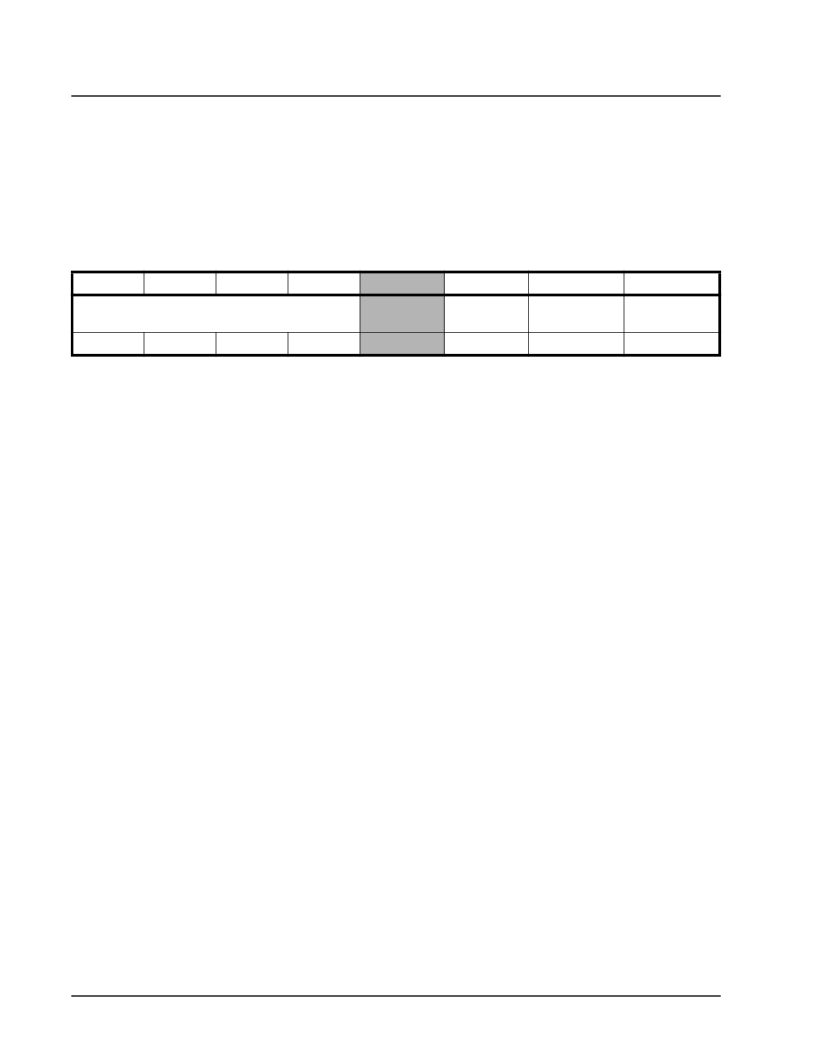- 您現(xiàn)在的位置:買賣IC網(wǎng) > PDF目錄376460 > XRT7245 (Exar Corporation) DS3 ATM User Network Interface(DS3異步傳輸模式用戶網(wǎng)絡接口) PDF資料下載
參數(shù)資料
| 型號: | XRT7245 |
| 廠商: | Exar Corporation |
| 英文描述: | DS3 ATM User Network Interface(DS3異步傳輸模式用戶網(wǎng)絡接口) |
| 中文描述: | DS3自動柜員機用戶網(wǎng)絡接口(DS3異步傳輸模式用戶網(wǎng)絡接口) |
| 文件頁數(shù): | 198/324頁 |
| 文件大?。?/td> | 4103K |
| 代理商: | XRT7245 |
第1頁第2頁第3頁第4頁第5頁第6頁第7頁第8頁第9頁第10頁第11頁第12頁第13頁第14頁第15頁第16頁第17頁第18頁第19頁第20頁第21頁第22頁第23頁第24頁第25頁第26頁第27頁第28頁第29頁第30頁第31頁第32頁第33頁第34頁第35頁第36頁第37頁第38頁第39頁第40頁第41頁第42頁第43頁第44頁第45頁第46頁第47頁第48頁第49頁第50頁第51頁第52頁第53頁第54頁第55頁第56頁第57頁第58頁第59頁第60頁第61頁第62頁第63頁第64頁第65頁第66頁第67頁第68頁第69頁第70頁第71頁第72頁第73頁第74頁第75頁第76頁第77頁第78頁第79頁第80頁第81頁第82頁第83頁第84頁第85頁第86頁第87頁第88頁第89頁第90頁第91頁第92頁第93頁第94頁第95頁第96頁第97頁第98頁第99頁第100頁第101頁第102頁第103頁第104頁第105頁第106頁第107頁第108頁第109頁第110頁第111頁第112頁第113頁第114頁第115頁第116頁第117頁第118頁第119頁第120頁第121頁第122頁第123頁第124頁第125頁第126頁第127頁第128頁第129頁第130頁第131頁第132頁第133頁第134頁第135頁第136頁第137頁第138頁第139頁第140頁第141頁第142頁第143頁第144頁第145頁第146頁第147頁第148頁第149頁第150頁第151頁第152頁第153頁第154頁第155頁第156頁第157頁第158頁第159頁第160頁第161頁第162頁第163頁第164頁第165頁第166頁第167頁第168頁第169頁第170頁第171頁第172頁第173頁第174頁第175頁第176頁第177頁第178頁第179頁第180頁第181頁第182頁第183頁第184頁第185頁第186頁第187頁第188頁第189頁第190頁第191頁第192頁第193頁第194頁第195頁第196頁第197頁當前第198頁第199頁第200頁第201頁第202頁第203頁第204頁第205頁第206頁第207頁第208頁第209頁第210頁第211頁第212頁第213頁第214頁第215頁第216頁第217頁第218頁第219頁第220頁第221頁第222頁第223頁第224頁第225頁第226頁第227頁第228頁第229頁第230頁第231頁第232頁第233頁第234頁第235頁第236頁第237頁第238頁第239頁第240頁第241頁第242頁第243頁第244頁第245頁第246頁第247頁第248頁第249頁第250頁第251頁第252頁第253頁第254頁第255頁第256頁第257頁第258頁第259頁第260頁第261頁第262頁第263頁第264頁第265頁第266頁第267頁第268頁第269頁第270頁第271頁第272頁第273頁第274頁第275頁第276頁第277頁第278頁第279頁第280頁第281頁第282頁第283頁第284頁第285頁第286頁第287頁第288頁第289頁第290頁第291頁第292頁第293頁第294頁第295頁第296頁第297頁第298頁第299頁第300頁第301頁第302頁第303頁第304頁第305頁第306頁第307頁第308頁第309頁第310頁第311頁第312頁第313頁第314頁第315頁第316頁第317頁第318頁第319頁第320頁第321頁第322頁第323頁第324頁

XRT7245
DS3 UNI FOR ATM
á
PRELIMINARY
REV. 1.03
198
Note:
Upon power up or reset, the LAPD Transmitter is
disabled. Therefore, the user must set this bit to “1” in order
to enable the LAPD Transmitter.
Initiate the Transmission
At this point, the LAPD Transmitter is ready to begin
transmission. The user has written the “information
portion” of the message into the on-chip Transmit
LAPD buffer, specified the type of LAPD message
that he/she wishes to transmit, and has enabled the
LAPD Transmitter. The only thing remaining to do is
to initiate the transmission of this message. The user
initiates this process by writing a “1” to Bit 3 of the Tx
DS3 LAPD Status/Interrupt Register (TxDL Start).
The bit format of this register is presented below.
A “0” to “1” transition of Bit 3 (TxDL Start) in this reg-
ister, initiates the transmission of the data link mes-
sage. While the LAPD transmitter is transmitting the
message, the ‘TxDL Busy’ (bit 2) bit will be set to “1”.
This bit-field allows the user to “poll” the status of the
LAPD Transmitter. Once the message transfer is com-
pleted, this bit-field will toggle back to ‘0’.
The user can configure the LAPD Transmitter to inter-
rupt the local μC/μP upon completion of transmission
of the LAPD Message, by setting bit-field 1 (TxLAPD
Interrupt Enable) of the “Tx DS3 LAPD Status/Interrupt”
register to “1”. The purpose of this interrupt is to let
the local μC/μP know that the LAPD Transmitter is
available and ready to transmit a new message. Bit 0
will reflect the status for the LAPD Transmitter interrupt.
Note:
this bit-field will be reset on reading this register.
Once the user has invoked the “TxDL Start” com-
mand, the LAPD Transmitter will do the following.
Generate the four octets of LAPD frame header
(e.g., Flag Sequence, SAPI, TEI, Control, etc.) and
insert it into the LAPD Message, prior to the user’s
information (see the LAPD Message Frame Format
in Figure 52).
Compute the 16 bit “Frame Check Sum” (FCS) of
the LAPD Message Frame (e.g., of the LAPD
Message header and information payload) and
append this value to the LAPD Message.
Append a “trailer” Flag Sequence octet to the end
of the message LAPD (following the 16 bit FCS
value).
Serialize the composite LAPD message and begin
inserting the LAPD message into the “DL” bit fields
of each outgoing DS3 Frame.
Complete the transmission of the frame overhead,
payload, FCS value, and trailer Flag Sequence
octet via the Transmit DS3 Framer.
Once the LAPD Transmitter has completed its trans-
mission of the LAPD Message, the UNI will generate
an interrupt to the local μC/μP (if enabled). Afterwards,
the LAPD Transmitter will proceed to retransmit the
LAPD Message, repeatedly at one second intervals. In
between these transmissions of the LAPD Message,
the LAPD Transmitter will be sending a continuous
stream of “Flag Sequence Bytes”. The LAPD Trans-
mitter will continue this behavior until the user has
disabled the LAPD Transmitter by writing a “0” to bit 0
(TxLAPD Enable) within the Tx DS3 LAPD Configu-
ration Register. If the LAPD Transmitter is inactive,
then it will continuously send the Flag Sequence
octets (via the “DL” bits of each outbound DS3
Frame) to the Far-End Receiver.
Note:
In order to prevent the user’s data (the payload por-
tion of the LAPD Message Frame) from mimicking the “Flag
Sequence” byte, the LAPD Transmitter will insert a “0” into
the LAPD data stream immediately following the detection
of five (5) consecutive “1s” (this “stuffing” occurs only while
the information payload is being transmitted). The ‘Far End’
LAPD Receiver (see Section 7.1.2.6) will have the respon-
sibility of detecting the 5 consecutive “1s” and removing the
subsequent “0” from the payload portion of the incoming
LAPD message.
Figure 52 presents a flow chart depicting the proce-
dure (in ‘white boxes’) that the user should use in
order to transmit a LAPD message. This figure also
indicates (via the “shaded” boxes) what the LAPD
Transmitter circuitry will do before and during
message transmission.
Tx DS3 LAPD Status/Interrupt Register (Address = 1Fh)
B
IT
7
B
IT
6
B
IT
5
B
IT
4
B
IT
3
B
IT
2
B
IT
1
B
IT
0
Unused
Tx DL Start
Tx DL Busy
TxLAPD
Interrupt Enable
TxLAPD
Interrupt Status
R/W
R/O
R/W
RUR
相關PDF資料 |
PDF描述 |
|---|---|
| XRT7288IP | CEPT1 Line Interface |
| XRT7288 | CEPT1 Line Interface(CEPT1線接口) |
| XRT7288IW | CEPT1 Line Interface |
| XRT7295AE | E3 (34.368Mbps) Integrated line Receiver |
| XRT7295AE_03 | E3 (34.368Mbps) Integrated line Receiver |
相關代理商/技術參數(shù) |
參數(shù)描述 |
|---|---|
| XRT7250 | 制造商:EXAR 制造商全稱:EXAR 功能描述:DS3/E3 FRAMER IC |
| XRT7250ES-PCI | 功能描述:界面開發(fā)工具 Evaluation Board for XRT7250 Series RoHS:否 制造商:Bourns 產(chǎn)品:Evaluation Boards 類型:RS-485 工具用于評估:ADM3485E 接口類型:RS-485 工作電源電壓:3.3 V |
| XRT7250IQ100 | 制造商:EXAR 制造商全稱:EXAR 功能描述:DS3/E3 FRAMER IC |
| XRT7288 | 制造商:EXAR 制造商全稱:EXAR 功能描述:CEPT1 Line Interface |
| XR-T7288 | 制造商:EXAR 制造商全稱:EXAR 功能描述:CEPT1 Line Interface |
發(fā)布緊急采購,3分鐘左右您將得到回復。